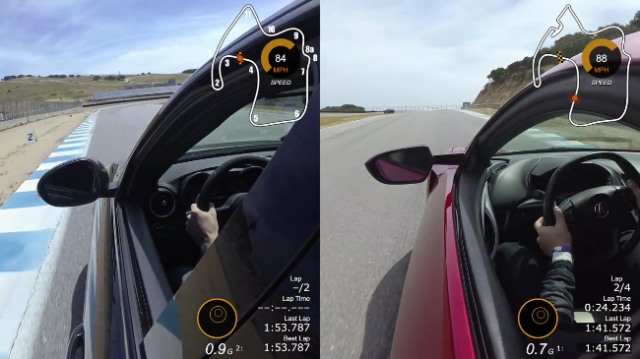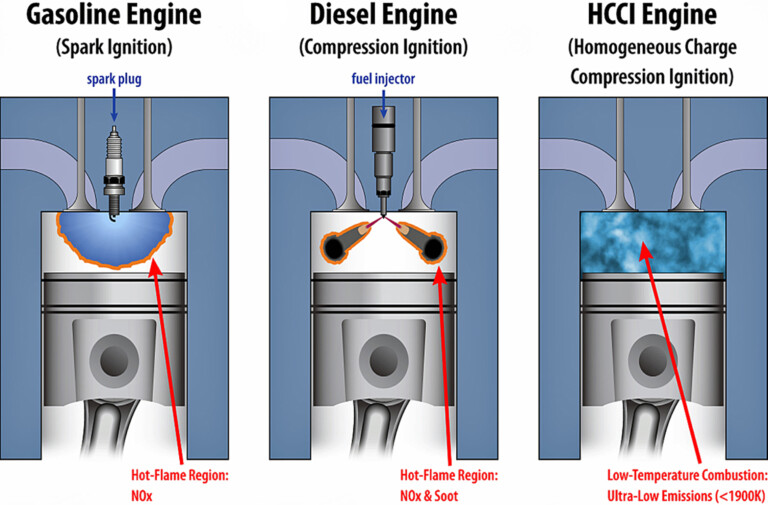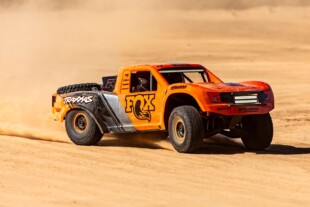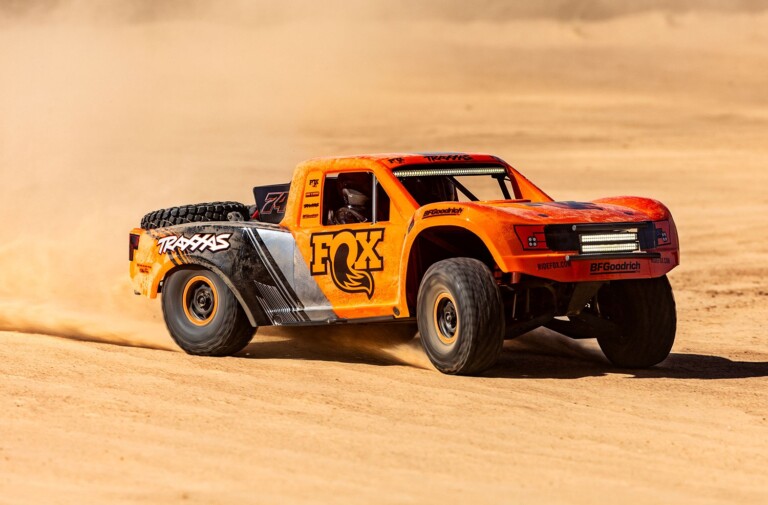Aside from the obvious difference in guts, what makes a professional driver quicker on-track? Jason from Engineering Explained took an Alfa Romeo Giulia Quadrifoglio to Laguna Seca and compared his performance to a seasoned professional in a new Acura NSX. Though the Alfa Romeo is no slouch, it is a comparatively-plush sedan and has nowhere near the potential of the mid-engined Acura. Nevertheless, it’s easy to observe a few differences in the two drivers’ techniques.
To start off, Jason humbly admits to three obvious differences between himself and the pro. These are his lack of confidence in the car, the pro’s usage of the track’s full width, and braking technique, which is discussed in detail here.
As he admits, he’s unwilling to really trust the car, despite describing it as “highly predictable” and having “great balance.” This shows in two main areas, which due to the location of the camera’s position on his tall Alfa, might not come across as easily for those unfamiliar with the track.
Flying Blind
With all due respect, his approach to Turn One is timid. He crests the hill at good speed, which with 505 horsepower and 443 lb-ft of torque isn’t too hard to do. In his defense, the crest obscures all view of what’s on the other side, and at an indicated 90 mph, it’s a little intimidating, especially since the car unweights slightly. In fact, there are a few corners at Laguna Seca which are blind and force a driver to rely on memory: Turn 1, the entry to the Corkscrew, and the technical Turn Six.
Treacherous Turn Six

Jason (left) only begins steering in when he can see the apex of Turn Six—far too late for a quick lap.
This corner really differentiates the green and the experienced at this circuit, and after one lap spent riding along with a new driver, you’ll get a good sense of how capable they are based on their performance there. The apex is tough to spot, and to be really fast, the driver must turn in before they can actually see the little red apex curb. The professional turns in before the apex is visible to trace a fast line, but Jason only turns the wheel when he’s upon the apex (0:34).
Plus, the corner drops abruptly at the apex, and that’s unsettling to the driver and the car if handled poorly. Watch how the pro driver steers in early (read: blindly) and confidently on the rumble strips (see the pro’s footage at 3:58), and mats the throttle when the suspension compresses at the apex!
This criticism is supported by the telemetry. Compared to the pro in the darty Acura, his steering inputs seem apprehensive and uncertain; the trace is sketchier, and he seems to be acclimating himself to the behavior of the Alfa. In comparison, the pro traces a neat line through the corner, like an artist assuredly drawing a curve they’ve traced millions of times before. He knows where he’s going, trusts the car and his own abilities, and maintains a higher average speed because he has a greater sense of how much grip he’s got underneath him.
In summary, Jason takes a conservative and practical approach to driving a new car at a new track. It’s a smart way to go about things, but if he’s to become truly quick at a varied and technical circuit like Laguna Seca, he needs to throw some textbook driving out the window, and figure out when and how he can use the track’s nuances to his advantage. Nevertheless, I’m sure the people lending him a $90,000 Alfa Romeo were happy to see it returned without any battle scars or smoldering brakes.























